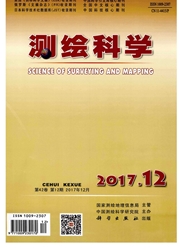

 中文摘要:
中文摘要:
在黄土高原选取代表不同黄土地貌类型的神木、绥德、延川、富县、宜君、长武、淳化、定边共8大研究样区200个小样区。在每个小样区中以1:1万地形图制作的分辨率为5m的DEM为研究对象,采用6种不同算法分别提取坡向。运用方差分析,排序分析,比较分析等方法,通过分析比较不同算法所提取坡向的中误差,不同坡向的面积,认为在黄土高原提取坡向时选用三阶反距离平方权差分算法和三阶反距离权差分算法较为合理。
 英文摘要:
英文摘要:
In Loess Hill and Gully Area, the regions of Shenmu, Suide, Yanchuan, Fu County, Yijun, Changwu, Chunhua, Dingbian are selected to represent different landforms, which are divided into 8 sample areas including 200 sub-areas. In each area, high accuracy DEM with spatial resolution at 5m according to the map scaled at 1:10 000 was taken as the research object and 6 algorithms to derive aspects were adopted. Employing the variance analysis, the sequence analysis and the contrast analysis, the author compared the median errors and the areas of different aspects obtained by different algorithms, and then concluded that the reasonable algorithms are those of three-order inverse distance square weight difference and three-order inverse distance weight difference.
 同期刊论文项目
同期刊论文项目
 同项目期刊论文
同项目期刊论文
 期刊信息
期刊信息
